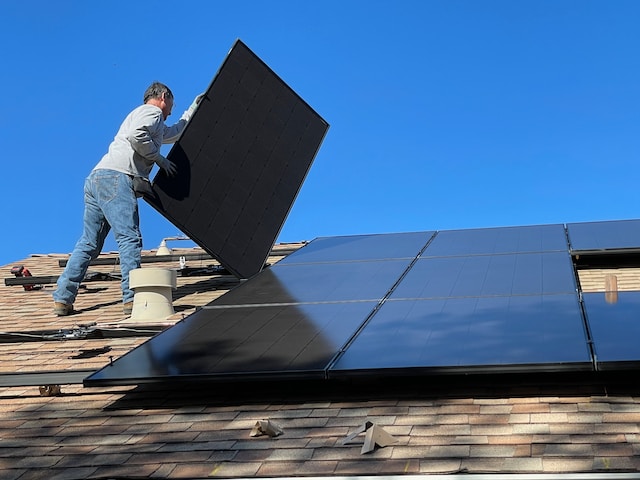
Photo from Unsplash
Harnessing the sun's power through solar sheets is an eco-friendly and increasingly popular way to generate home energy. However, transitioning to solar energy requires thoughtful consideration. Before leaping, homeowners should weigh various factors to ensure they maximize the benefits of this renewable energy source.
Below are five crucial elements to contemplate before installing solar sheets at your residence.
Factors to Consider Before Getting Solar Sheets for Your Home
1. Assess Your Home's Solar Potential
When considering the integration of solar sheets into a home, it's essential to recognize that not every residence is ideally equipped for such installations. A multitude of factors plays into the viability of harnessing solar energy efficiently. First and foremost, the home's geographical location is paramount; while some areas bask in generous sunlight throughout the year, others are relegated to sporadic or limited solar exposure.
Additionally, the specific design of the roof, including its angle, orientation, and any potential barriers like looming trees or nearby structures, can greatly impact the solar sheets' efficiency. Given these variables, it's prudent for homeowners to leverage available tools or seek insights from solar professionals to comprehensively assess their property's solar potential before making a significant investment.
2. Understand the Financial Implications
Solar sheets, while representing a notable financial outlay, have seen a consistent decline in costs over recent years, making them more accessible to a broader audience. Diving into the world of renewable energy and considering professional solar panel installation necessitates a holistic examination of the associated financial dimensions. At the forefront are the immediate expenses of purchasing and installing the sheets. Yet, this initial cost can often be offset, at least in part, by potential federal or state incentives and tax credits that aim to promote renewable energy adoption.
Moreover, homeowners should factor in the projected monthly savings on their electricity bills, which will accrue over time. By calculating the payback period, or the duration required for these savings to eclipse the upfront expenditure, individuals can gain a clearer perspective on their investment's long-term financial viability and benefits.
3. Choose the Right Solar Panel System
Solar technology offers a range of panel types catering to diverse needs and preferences. The three primary categories - monocrystalline, polycrystalline, and thin film - have distinct characteristics. Monocrystalline sheets, recognized for their pure silicon content and sleek black appearance, boast high efficiency but often come with a steeper price tag than their counterparts. Polycrystalline sheets, distinguished by their bluish hue, might offer a more budget-friendly alternative, though with a slight trade-off in efficiency. Meanwhile, thin-film sheets, which might lag in efficiency, offer installation flexibility and can be an optimal choice for expansive areas or surfaces with unconventional shapes. In deciding, homeowners should carefully juxtapose these considerations against their specific energy requirements and financial constraints.
4. Be Aware of Maintenance and Warranty
Despite being lauded for their relative ease of upkeep, solar sheets demand a degree of regular attention to ensure optimal performance. One primary maintenance task is periodic cleaning, as accumulated dust, debris, or bird droppings can hamper their efficiency by obstructing sunlight. Additionally, intermittent professional inspections can help identify and rectify potential issues before they escalate, safeguarding the longevity of the installation. Equally crucial is a comprehensive understanding of the accompanying warranties. Typically, solar sheets are backed by two main warranties: a performance guarantee, which pledges that the panel will retain a specified percentage of its power output over a set period, and an equipment guarantee, which addresses manufacturing defects or unusual wear and tear, offering homeowners peace of mind regarding their investment.
5. Consider Future Flexibility
Every household is dynamic, with needs and lifestyles shifting as time progresses. Factors like expanding the living space, purchasing energy-hungry appliances, or transitioning to electric vehicles can substantially amplify a home's energy consumption. When venturing into solar installations, foresight is paramount; homeowners should evaluate their present energy consumption and anticipate probable future increases. Investing in a solar setup designed for scalability can be invaluable, allowing for adding more sheets or integration with emerging technologies as required.
Furthermore, coupling solar sheets with renewable energy storage solutions, such as home batteries, can offer enhanced flexibility, ensuring that the household remains energy-resilient even as its needs evolve.
Conclusion
Transitioning to solar energy is a commendable step towards sustainability, reducing carbon footprints, and achieving energy independence. By considering a property's solar potential, understanding the financial landscape, choosing an appropriate system, being mindful of maintenance, and planning for future flexibility, homeowners can ensure they derive maximum benefit from their solar investment. After thorough consideration, embracing solar energy can be both an environmentally conscious and economically-savvy decision.
You may also like
Solar Shingles - An Innovative Solution for Renewable Energy
What Color Roof is The Most Energy-Efficient? (And Why It Matters)
The Benefits of Renewable Energy For Your Family
An In-Depth Comparison of The Three Types of Solar Panels
